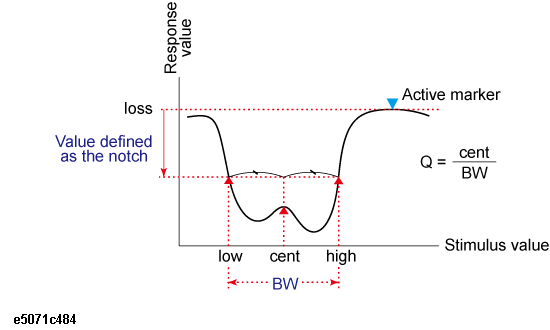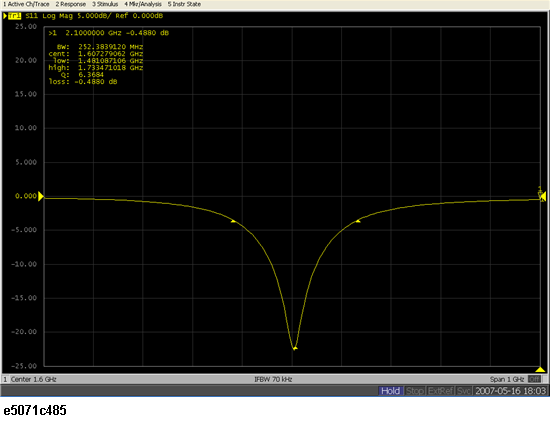
Other topics about Data Analysis
The notch search function is used to obtain the bandwidth, center frequency, cutoff points (high-frequency side and low-frequency side), Q, and insertion loss of a trace based on the active marker position. The notch search function starts from the left side of the active marker position, and ends when points that meet the conditions are found.
The figure and table below shows the definition of parameters obtained by notch search function. The notch value in figure below must be specified by the user.
Bandwidth Parameters

Definition of bandwidth parameters
|
Bandwidth parameter name |
Definition |
|
Insertion loss (loss) |
Measurement value at the active marker position when the notch search is executed. |
|
Lower cutoff point (low) |
Lower frequency of the 2 points on both sides that have the measurement value apart from the active marker position by the notch value. |
|
Higher cutoff point (high) |
Higher frequency of the 2 points on both sides that have the measurement value apart from the active marker position by the notch value. |
|
Center frequency (cent) |
Frequency of the middle point between the lower cut-off point and the higher cut-off point (high + low)/2. |
|
Bandwidth (BW) |
Frequency difference between the higher cut-off point and the lower cut-off point (high – low). |
|
Q |
Value obtained by dividing the center frequency by the bandwidth (cent/BW). |
Place the active marker at the desired point on the trace at which the notch search is executed. The response value of this active marker itself is the insertion loss in the notch search (loss).
Press Marker Search.
Press Notch Value and enter the notch value at the entry area that appears.

For more information on displaying the notch search result, see Notch Search.